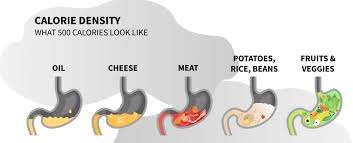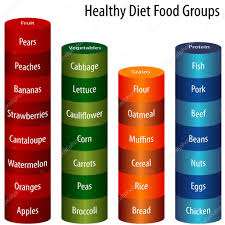Ever wondered why you can devour an entire cheeseburger and still have room for fries, but a healthy salad leaves you stuffed after just a few bites?
It is all about calorie density.
The world of fast food is a tantalizing yet treacherous land full of high-calorie, low-nutrient temptations.
Understanding calorie density can help you navigate this world like a pro, whether you’re counting calories for health reasons or just curious about the science of fast food.
In this article, we would break down how to analyze calorie density, why it matters, and how these sneaky little numbers contribute to obesity.
We shall use real-life examples, scientific data, and maybe a little humor to keep things digestible (pun intended).
Article Index:
- What is Calorie Density?
- How to Calculate Calorie Density of Fast Food
- Foods with Low Caloric Density: Are They Better?
- Why High-Calorie Density Foods Lead to Overeating
- Real-Life Example: The Tale of a Cheeseburger vs. a Salad
- Understanding Calorie Density Charts
- Nutrient Density vs. Calorie Density
- Conclusion: The Hidden Costs of Calorie-Dense Fast Food
What is Calorie Density?
Calorie density refers to the number of calories in a given weight of food.
Simply put, it is how much energy (calories) you get from a specific volume or weight of food.
High-calorie density foods pack a lot of energy into small portions, like that mouthwatering double cheeseburger.
In contrast, low-calorie density foods, like leafy greens or fruits, provide fewer calories for larger volumes.
According to research published in The American Journal of Clinical Nutrition, calorie-dense diets are a significant factor contributing to obesity.
Why?
Because when you consume calorie-dense foods, you are more likely to overeat since your body feels less satiated.

How to Calculate Calorie Density of Fast Food?
Now, let’s talk about the nitty-gritty: how to calculate calorie density of fast food.
Here is a simple formula:
Calorie Density = Total Calories / Weight (in grams)
So, if your fast food burger has 500 calories and weighs 250 grams, the calorie density would be 2 calories per gram.
For reference, foods with a calorie density of 1-1.5 are considered low, while anything over 3 is high.
The higher the calorie density, the easier it is to overconsume calories without feeling full.
For example, a small order of French fries from a popular fast-food chain might seem like a light snack, but it often has a calorie density of 4-5 calories per gram.
On the other hand, a bowl of vegetable soup might have a calorie density of less than 1.
Journal of Nutrition Education and Behavior emphasizes that understanding these numbers can be crucial for people trying to manage their weight or prevent obesity.
Foods with Low Caloric Density: Are They Better?
You have probably heard the term “Foods with low caloric density” thrown around in diet circles.
But what does it mean, and are these foods really better for you?
Low-calorie density foods, like fruits, vegetables, and broths, allow you to eat more volume without racking up the calories.
They are packed with water and fiber, which help keep you feeling full and satisfied.
Think about a typical “low calorie food for dinner” option: a large salad topped with lean protein and a light vinaigrette.
You can eat a whole plate of this for the same calories as a couple of chicken nuggets.
That is why many dieticians recommend low-calorie density foods for weight loss.
A study in Appetite found that people who consumed low-calorie density meals ate less overall compared to those who chose higher calorie-dense options.
The more you know, right?
Why High-Calorie Density Foods Lead to Overeating?
Let’s be real—when was the last time you felt truly stuffed after eating a small fast-food burger?
Probably never.
These high-calorie density foods are like a magic trick: they seem satisfying at first, but somehow, you are still hungry. Engineered to be hyper-palatable, they are loaded with fats and sugars that hijack your brain’s reward system, making you crave them even more.
That is why stopping at just one chip or a single cookie feels like an impossible feat.
The problem?
Your body struggles to recognize fullness when consuming these foods. High-calorie density meals don’t stretch your stomach as much as nutrient-dense foods like vegetables or lean proteins. This means fewer signals get sent to your brain to say, “Hey, we’re good, stop eating now.”
The result? You eat more than you actually need, and over time, those extra calories add up.
And here is another twist—your brain is wired to keep the cravings coming.
Certain neurons in the hypothalamus do not just signal fullness; they also fuel sugar cravings. That’s why even after a big meal, dessert suddenly sounds like a great idea. It is not just a lack of willpower—it’s biology.
So, how do you outsmart your own brain?
Focus on foods with low energy density, like fruits, vegetables, and whole grains, which help fill you up without packing on excess calories. Adding protein-rich foods to your meals can also boost satiety, keeping you satisfied longer.
Bottom line?
High-calorie density foods may taste amazing, but they are sneaky when it comes to keeping you full.
Understanding how they work can help you make smarter choices and avoid falling into their cleverly designed trap.
The Tale of a Cheeseburger vs. a Salad
Imagine you are grabbing lunch.
Option 1: a cheeseburger, fries, and a soda.
Option 2: a big, colorful salad with grilled chicken, topped with a simple dressing.
The cheeseburger meal clocks in at around 1200 calories with a sky-high calorie density, while the salad sits comfortably at 400 calories with a lower calorie density.
Even though the salad weighs more, you are likely to feel more satisfied after eating it.
Why?
Because it takes up more space in your stomach and contains fiber and protein that help with satiety.
Meanwhile, that cheeseburger is like a calorie bomb in disguise, leaving you feeling peckish just a couple of hours later.
Understanding Calorie Density Charts
A calorie density chart is your best friend if you are trying to make sense of this.
It shows the calorie density of various foods, helping you make informed choices.
High-calorie density foods like fried chicken, pizza, and doughnuts are at the top, while veggies, fruits, and broths chill out at the bottom.
If you have ever downloaded a “calorie density chart PDF,” you know how eye-opening it can be.
It visually highlights the differences between calorie-dense fast food and healthier options, making it easier to plan meals that would not leave you ravenous. To lose weight, you need to learn how to calculate your calorie deficit in the correct manner.
Nutrient Density vs. Calorie Density
Ah, the eternal debate: nutrient density vs. calorie density.
While calorie density measures the number of calories per gram, nutrient density measures the vitamins, minerals, and overall nutritional value per calorie.
Foods like kale and blueberries are nutrient-dense, while fast food options are calorie-dense but nutrient-poor.
For example, you could use a “Nutrient Density Calculator” to see how a leafy green salad stacks up against a fast-food burger.
Spoiler: the salad wins every time, even if it has fewer calories. Homemade smoothies help you lose weight as they are made from natural ingredients. Shakes from the market are (on the other hand) loaded with calories thereby making you gain unwanted body fat.
The British Journal of Nutrition states that focusing on nutrient density is key to maintaining a healthy diet and avoiding empty calories.

The Hidden Costs of Calorie-Dense Fast Food
So, there you have it.
Analyzing the calorie density of fast food is not just a fun math exercise; it is a way to understand why we’re so tempted to overeat when faced with fries and milkshakes.
The sneaky nature of high-calorie density foods makes them easy to consume but hard to burn off, setting the stage for weight gain and health issues down the line.
While we are not here to tell you to ditch fast food forever (hey, everyone loves a good cheat meal), understanding calorie density can be the first step toward making smarter food choices.
Because in the world of food, knowledge is not just power—it is also the key to a healthier, more balanced diet.
References: